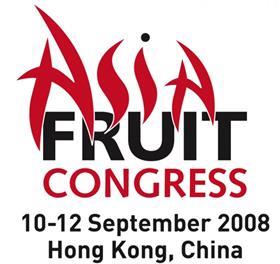
Two of the Asian market’s rising stars, India and Vietnam, can both be described as countries with enormous potential for increasing fresh fruit and vegetable sales during the next few years. However, the challenges retailers and suppliers alike will face could cause some growing pains along the way.
Speaking during the second session of the Asiafruit Congress, Sanjay Sethi of Technopak Advisors and Ralf Matthaes of TNS Vietnam offered delegates an overview of the opportunities and difficulties facing the fresh produce sector in their respective countries.
According to Mr Sethi, greater awareness of global trends among India’s increasingly affluent and westernised social groups give it enormous potential in terms of sales growth, but there remains an urgent need to improve distribution channels and boost the amount of processed, packaged food products that are available on the market.
“The distribution channels represent the weak link in the chain when it comes to India’s fresh produce market, since they are virtually non-existent,” said Mr Sethi, who also revealed that the Indian government would soon begin to subsidise infrastructure projects in order to address the situation. Food processing, meanwhile, remains very much at a nascent stage, he noted. “Processed products account for just 2.2 per cent of the country’s food market compared with 80 per cent in the US, Malaysia and Thailand. The time has come to pay this area more attention.”
With Asia’s second-youngest population, its third-largest female workforce and a comparatively small urban population that is “set to explode”, Vietnam’s continued industrialisation and the emergence of a wealthy middle class are likely to provide good opportunities for prospective suppliers in the near future, according to Mr Matthaes.
Vietnam has enjoyed the second largest growth in FMCG sales outside China during the past year, he revealed, while the share of consumer incomes spent on fresh produce is now larger than all other Asian markets except India, rising from 65 per cent to 68 per cent last year. “Vietnam represents a golden opportunity to sell and market your products at a good price,” he added.
Mr Matthaes said he expected Vietnam’s modern retail trade to grow rapidly next year, when 100 per cent foreign-owned distribution within the country will be permitted for the first time.
In both India and Vietnam, the integration of modern and foreign retailing represents perhaps the biggest challenge. For India, Mr Sethi said he felt the big question was whether or not modern retailing can be extended to rural parts of India. “The Indian consumer shares a good rapport with traditional retailers, so modern retail needs to offer the same kind of interaction,” he suggested. “Modern methods need to be merged with the traditional experience.”
Sanjeev Gulati of leading import company IG International said he felt some modern retail chains were succeeding in providing a viable alternative to traditional outlets. “Retailers are raising the standards and expect high quality, as do consumers and importers. Consumers in particular are realising that modern retail can add some value,” he said.
In Vietnam, the potential of the country’s rural customer base should not be overlooked, according to Mr Matthaes. “Rural Vietnam could be a big opportunity, given the fact that many people are still earning around US$100 per month,” he said.
Siebe van Wijk of Fresh Studio Innovations Asia, which recently helped leading retailer Metro set up a new sourcing and distribution centre and develop a simplified version of GlobalGAP for local producers in Vietnam, added that increased modernisation would benefit consumers. “I think that increasing numbers of retailers, especially foreign ones, will boost quality,” he said.






No comments yet